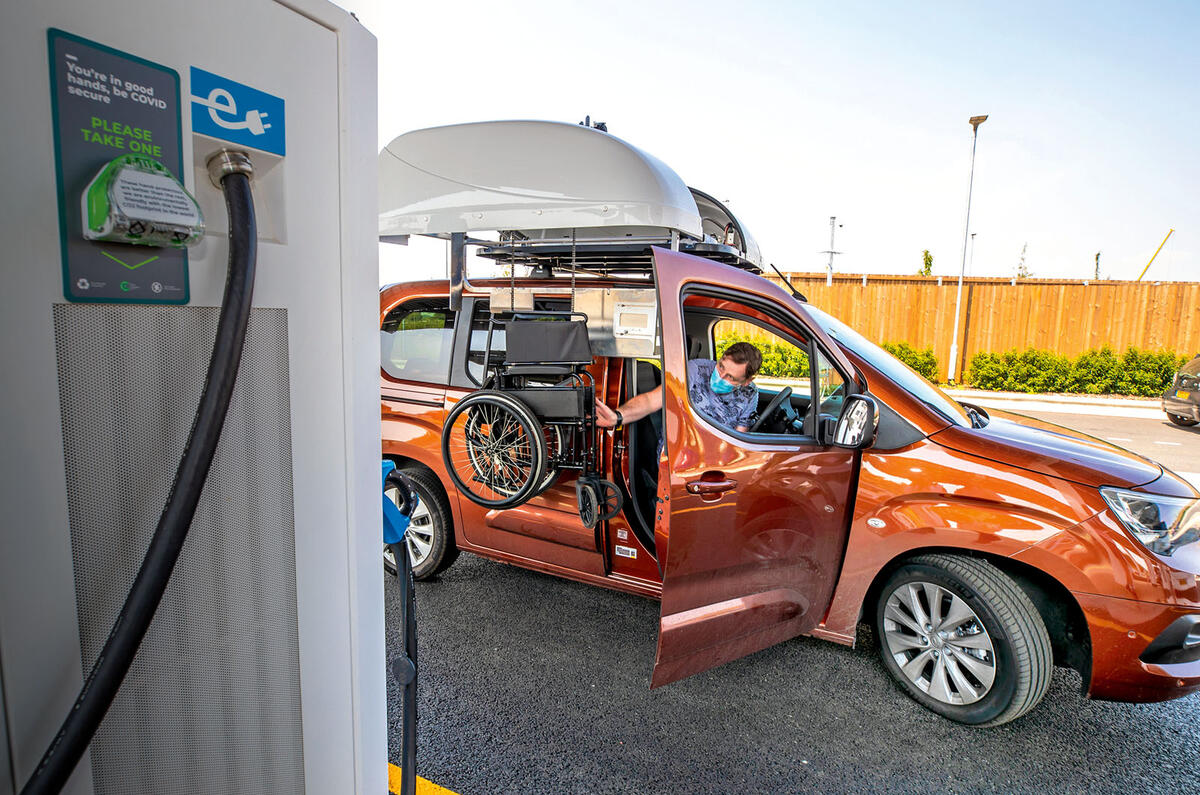A parliamentary report has criticised the absence of electric car charge points that fully satisfy new standards for disabled driver access, concluding that “the interests of disabled drivers have been left behind in the rollout”.
The Public Accounts Committee’s paper into the UK’s EV charge point network also claimed that of the 15,000 rapid and ultra-rapid charge points in the UK, none is fully compliant with BSI PAS 1899, a standard created partly by the Department for Transport (DfT) to improve the charge point experience for disabled drivers by making chargers safer and more accessible.
Explaining the challenges facing disabled users, the committee wrote: “By 2035, 1.35 million drivers with disabilities are expected to be partially or wholly dependent on public charge points, but many charge points, or their surrounding environment, have features which make them inaccessible.”
It noted that these challenges include charge points being placed near obstructions, such as kerbs, which make it harder for wheelchair users to use, or the weight of the cable/force needed to attach the connector being too great.
The report went on to conclude: “Failure to address problems with the uptake of the standard will mean that the public charge point network will continue to develop without meeting the needs of drivers with disabilities.”
In response to the findings, Nigel Fletcher, CEO of the Motability Foundation, a charity that has been advocating for PAS 1899 to be recognised as the legal standard for charge points, argued that while ultimately it is a decision for the government, “providers of public charging should also be taking responsibility for ensuring their infrastructure is accessible”.
While the Motability Foundation agreed with the committee’s report, it said it cannot verify the claim that there are no charge points that comply with the standard, given there are no requirements for operators to collect and share data on accessibility. It did, however, agree the number was low.
For example, in March Instavolt opened a new ultra-rapid charging site in Hampshire. Each of the facility’s 44 charging bays are larger than standard charging bays, to improve access and safety for disabled users.
The Winchester Superhub has up to 1.8 metres of additional access and wheelchair manoeuvring space around each bay. In addition, payment terminals and screens are at a more convenient height for wheelchair users, while swing arms extending from the chargers support the weight of charging cables.





Join the debate
Add your comment
I had a look at the guidelines (as I work in a similar industry). What scares me it talks about making it easier for people with poor fine finger acrtions who can't use screens. I'm all for access for wheelchair users etc, correct thing to do. But should people who can't use touchscreens be driving a 2.5 tonne modern EV SUV? I'd be happy to be corrected by someone!!